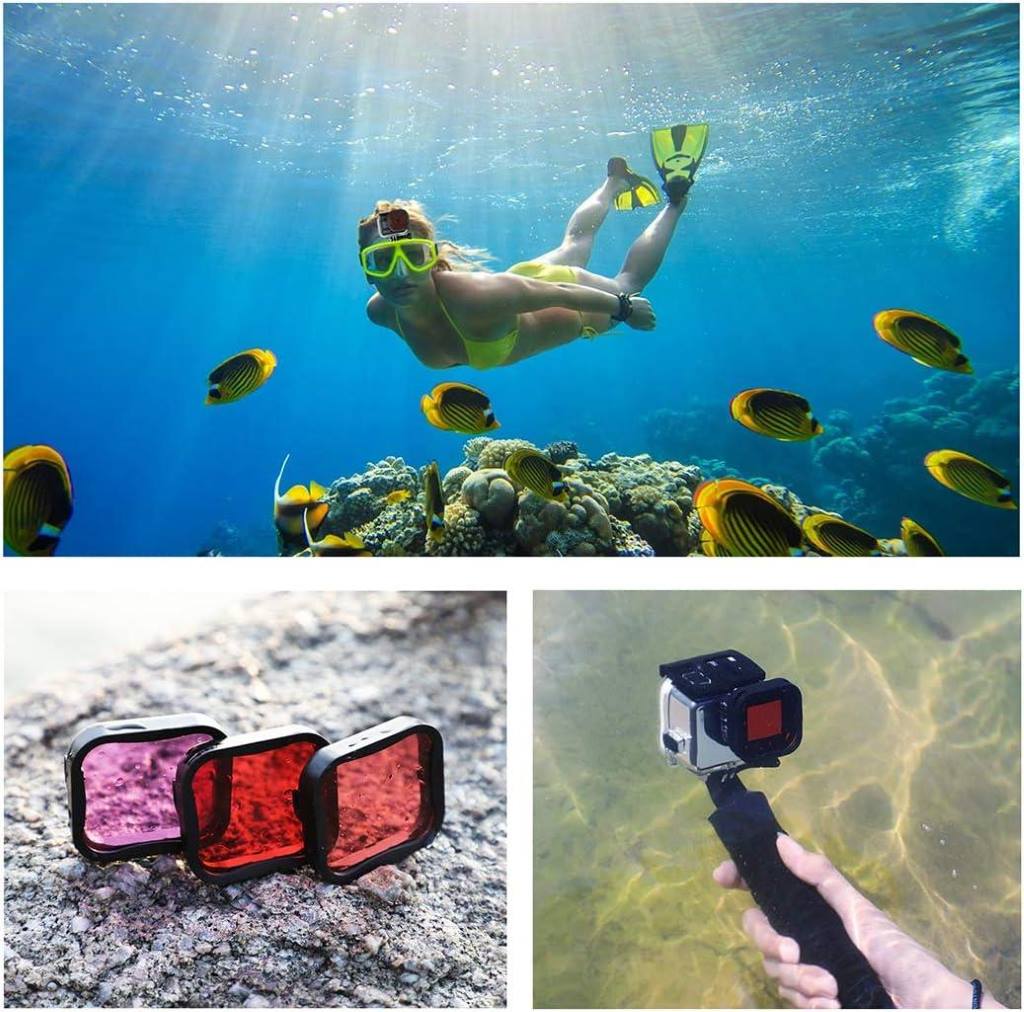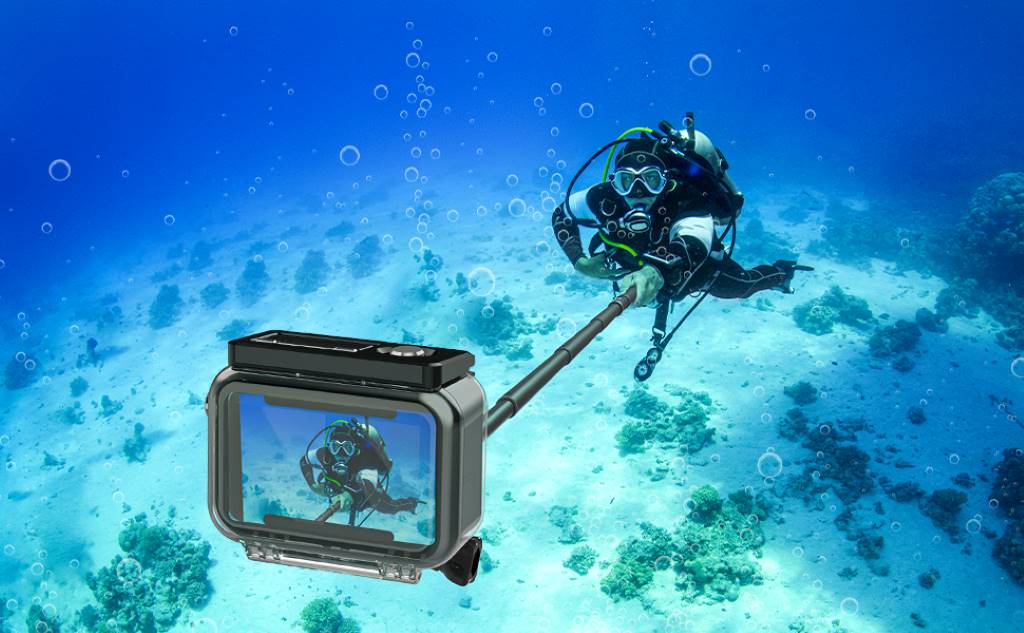Imagine plunging into crystal-clear waters and capturing vibrant coral scenes or graceful manta rays on video. Underwater filming with GoPro steps opens up this world. GoPro cameras make it simple for scuba divers to record adventures. Less than 10% of the ocean has been explored, yet millions dive yearly to witness its wonders. NOAA research shows optics like underwater cameras help track marine life and ecosystems. Follow these steps to create high-quality underwater videos.
Choose the Right GoPro Model
Pick a model suited for water work. GoPro Hero 13 leads with strong battery life and smooth image stabilization. It handles 4K Ultra High Definition video well. Older options like GoPro Hero 12 or HERO11 Black Mini also work for beginners. GoPro HERO7 suits basic needs, but newer ones offer better video stabilization.
Consider your dive type. For snorkeling, any waterproof model fits. Scuba divers need depth protection. GoPro Hero 13 dives to 33 feet without extra gear. Test models on land first. Check forums for user experiences with GoPro mount options.
- Hero 13: Best for long shoots and deep dives.
- Hero 12: Solid for wide-angle shots.
- Older models: Budget-friendly for starters.
Research shows advanced sensors in recent GoPros improve low-light capture underwater.
Essential Gear for Underwater Setup
Gather tools before your dive. Start with a waterproof housing. GoPro Protective Housing reaches 196 feet, perfect for scuba. It protects against pressure.
Add a GoPro mount for steady shots. Bite Mouth Camera Mount lets you film hands-free. Floating selfie stick keeps the camera afloat if dropped. Dive Housing adds extra safety.
Lights matter in dim waters. Video lights restore colors lost to depth. Lighting systems like dive torches brighten subjects. Underwater lighting kits help with coral scenes.
Filters fix color issues. Red filter brings back reds in shallow water. Coloured filters or underwater filters suit different depths. For macro work, use macro lenses or Close Up Lens.
Other must-haves include external microphone for clear RAW Audio, though water muffles sound. Dome port or Dome lens widens view for split shots.
- Housing: Seals the camera.
- Mounts: Stabilize position.
- Lights: Boost visibility.
- Filters: Correct hues.
Pack a tray for control. This setup turns your GoPro into a full video camera system.
Prepare Your GoPro Before Diving
Charge the battery fully. Turn off Auto Power Off to avoid shutdowns. Disable WiFi and Bluetooth to save power. Format the SD card for space.
Set up Custom Presets for quick switches. Create one for wide shots, another for macro modes. White Balance needs manual tweak; auto shifts colors oddly underwater.
Lick the lens to prevent fog. Dry it after. Test in a pool. Practice buoyancy to avoid stirring silt.
Update firmware via Quik app. This ensures video stabilization works smooth.
Check seals on housing. Rinse gear post-dive.

Step-by-Step Camera Settings
Follow these steps for sharp footage.
- Select Video Mode. Choose 4K or 5.3K for quality. Frame rate at 60fps captures smooth motion.
- Adjust Lens. Wide for landscapes, linear to reduce fisheye. For macro lenses, switch to close focus.
- Set White Balance. Use native or custom for underwater. Avoid auto.
- Tune Exposure. Lower ISO in bright shallows. Raise for depth. Shutter speed controls blur; aim high for action.
- Enable Stabilization. HyperSmooth fights shakes from currents.
- Add Filters. Red filter for 15-20 feet. Deeper needs lights.
For photos, use RAW files for edits. Exposure compensation fine-tunes light.
Slow Motion Video needs higher frame rates. LOG picture profile aids post-production.
Test settings on short clips.
Mounting and Handling Techniques
Secure your GoPro right. Use Head Strap 2.0 for POV shots. Chest mount for steady views.
Floating selfie stick extends reach for split shots. Bite Mouth Camera Mount films your face and scene.
Underwater, hold steady. Use both hands if possible. Buoyancy control prevents drift.
For group dives, sync with buddies. Avoid touching reefs.
Practice on surface. Currents demand quick adjustments.
Filming Techniques for Stunning Footage
Shoot in clear water with sun behind you. Stay shallow for natural light. Get close to subjects to cut water between lens and target.
For underwater videography, pan slow. Follow fish schools. Capture behaviors like manta rays gliding.
Use macro work for small critters. Dome port helps over-under shots.
Frame rate matters for action. 4K Ultra High Definition shines in edits.
Edit in Quik app for quick cuts. Post production boosts colors.
- Get close: Reduces distortion.
- Steady shots: Use stabilization.
- Vary angles: Low for drama.
Underwater footage looks best with lights on subjects.
Lighting and Color Correction
Water absorbs reds first. Use red filter in shallows. Deeper, add video lights.
Underwater lighting kits fill shadows. Position lights at 45 degrees to cut backscatter.
White Balance to 5500K mimics daylight. Custom Presets save time.
In low light, boost ISO but watch noise. Sensor size affects this.
For high-quality underwater videos, combine filters and lights.
Advanced Tips for Pros
Try RAW Audio with external microphone. Video editing software handles LOG profile.
Auto settings work for beginners, but manual gives control. Exposure settings tweak brightness.
For dive trips, pack spares. Bluewater Travel plans spots with good viz.
Master split shots with dome port. Underwater photography principles apply to video.
Use slow motion for dramatic effects. Image stabilization smooths waves.
Discover Now:
Discover the Hidden Gems of South Coyote Buttes
Tips to Enjoy Your Summer Vacation
Common Mistakes to Avoid
Don’t shoot toward sun; it flares. Skip auto white balance; it shifts.
Poor buoyancy stirs silt. Overzoom distorts.
Forget lights in depth; footage turns blue. Neglect rinse; salt corrodes.
Test gear pre-dive. Backup files.
Post-Production and Sharing
Transfer to Quik app. Adjust colors, cut clips. Add music for engagement.
GoPro Studio 2.0 offers tools. LUT (look up table) grades footage.
Share on social. Instructional videos inspire others.
Mastering your GoPro Underwater comes with practice.
Conclusion
Underwater filming with GoPro steps starts with gear and ends with edits. You now know setups, settings, and tips for great videos. Grab your GoPro, hit the water, and capture those moments. Start your next dive adventure today.
FAQs
What settings work best for GoPro underwater video?
Use 4K at 60fps, wide lens, manual white balance, and stabilization on. Add red filter for color.
Do I need a housing for GoPro dives?
Yes for depths over 33 feet. Protective housing reaches 196 feet.
How do filters improve underwater footage?
Red filters restore lost colors in shallows. Lights help deeper.
Can GoPro handle macro underwater shots?
Yes, with macro lenses or close-up modes for small subjects.
What lights best for GoPro underwater?
Video lights or kits add white light for true colors.

